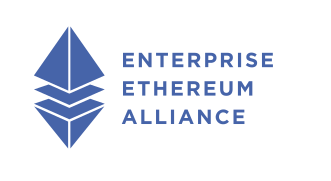By Bradley Stone, EEA Staff Writer and Researcher
In our previous discussion on Ethereum’s evolution as a business platform, we delved into the transformative journey of Ethereum as an enterprise-level technology. We explored how its technology has increasingly found its place in real-world applications, ranging from small businesses to multinational corporations. In this post, we discuss the evolving role that the Enterprise Ethereum Alliance (EEA) has played over the years in supporting these developments.
The EEA’s Initial Focus and Activities
In the early years, the EEA largely focused on private blockchains and consortiums tailored to specific business needs to bridge the gap between then-nascent blockchain technology and the practical necessities of the business world.
EEA’s initial programs prioritized the development of core specifications for implementing private blockchain, such as the Enterprise Ethereum Client Specification (Core Spec) and the Permissioned Blockchain Specification.
Another key early specification effort was the Off-Chain Trusted Compute Specification. These technical guides made Ethereum’s cutting-edge technology accessible and practical for real-world business applications.
To explore Ethereum’s potential, the EEA established working groups like the Ethereum Mainnet Working Group, which helps businesses understand how they can use the security and reliability of the Ethereum Mainnet to secure the core of their information infrastructure. The EEA also organized educational events covering key industry themes.
Public Ethereum Advances: Future Direction of the EEA
The constant dynamism within the Ethereum ecosystem demands a responsive and adaptive approach. By 2020, a significant pivot toward public blockchains was already well underway. That was primarily driven by the advancements in the Ethereum Mainnet, which has come a long way towards offering the “three Ps” necessary for various business use cases.
Around that time, the EEA underwent several structural changes and established new Working Groups, such as the Ethereum Training Quality (EthTQ) Working Group.
The EEA continues to support open-source code through EEA Community Projects and ongoing work on Ethereum standards, driving innovation while ensuring we are closely aligned with the goals of the public Ethereum ecosystem.
In response to the growing business engagement with Ethereum, the EEA has introduced various initiatives to provide unbiased, practical information to guide and support businesses navigating the Ethereum ecosystem.
These include our Ethereum Business Readiness Report and related research, as well as our educational primers series. With the continued evolution of Ethereum, these and other initiatives are intended to provide a trusted, neutral source of information about the current state, plans, and merits of Ethereum as a business platform for the benefit of our members and the broader community.
Adapting to a new environment
As the Ethereum ecosystem has been evolving, the EEA adapted its activities to reflect these shifts. Here are some examples:
- DeFi’s Resilience and Potential: The EEA recognized the potential of DeFi following its demonstrated resilience during last year’s crypto market crash. The EEA has since established the DeFi Risk Assessment, Management, and Accounting (DRAMA) Working Group to investigate the risks and benefits of DeFi for businesses, ensuring the Ethereum-for-business community is well-equipped to leverage this potential.
- Embracing the Merge: The successful Ethereum Merge highlighted the network’s robustness and enhanced security. Acknowledging this milestone, the EEA has been committed to aligning its specifications and guides with the new proof-of-stake Ethereum ecosystem. The Alliance also emphasizes the importance of network governance in its educational efforts, reinforcing Ethereum’s capability to maintain complex core infrastructure.
- Advances in Privacy-Preserving Technology: The introduction of zkEVMs marked a significant stride toward the large-scale implementation of privacy-preserving technology on public blockchains. The EEA, recognizing the importance of privacy for businesses, has begun exploring the implications of zkEVMs for the Ethereum-for-business ecosystem, promoting an understanding of this advancement among its community.
- Addressing Regulatory Shifts: Regulations like MiCa in the EU presented new opportunities and challenges for businesses interested in blockchain adoption. The EEA stays abreast of these regulatory changes, updating its community through ongoing content creation and educational efforts. The Alliance aims to support businesses in navigating this evolving regulatory landscape, aiding them in leveraging the benefits of Ethereum while complying with regulatory requirements.
We look forward to working with our members and the greater Ethereum community, offering guidance, support, and stewardship. As we’ve always maintained: Ethereum is a journey, not a destination – and the EEA is here to help guide the way for businesses.
The post The EEA from Past to Future appeared first on Enterprise Ethereum Alliance.





